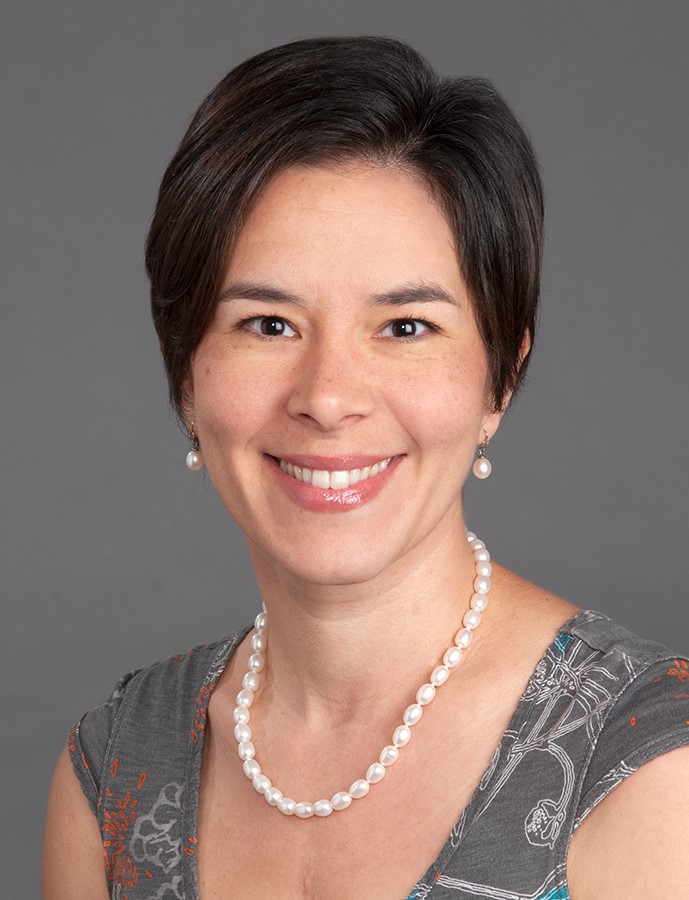Recognizing and Addressing Food Insecurity Among Families

Kimberly Montez, MD, MPH, FAAP
February 22, 2021
Food insecurity can lurk anywhere.
And now more than ever, it is critical that health care institutions -- from primary care clinics to hospital medicine to emergency departments -- screen and intervene for food insecurity as the COVID-19 pandemic has exacerbated the problem. The lack of access to nutritious food also has disproportionately affected Black and Brown families.
Research shows that children who don’t get enough to eat face higher risks of chronic health conditions, including anemia and asthma. Children struggling to get enough to eat also are more likely to have problems in school and may have developmental delays and mental health concerns.
With the growing recognition of the negative impact that food insecurity has, the academic clinic at which I work in Winston-Salem, North Carolina, began addressing food insecurity eight years ago. My clinic serves a patient population in which more than 92% have Medicaid insurance and predominantly self-identify as African American/Black or Hispanic/Latinx.
We saw a decrease in food insecurity rates as we built our comprehensive food program, which is called Food is Health. There was a 5.5% drop in patients who screened positive for food insecurity over a 2-year period just before the pandemic hit.
The desire to do something started after frequently hearing devastating patient stories, including a 3-year-old noted to be underweight during a well-child visit at the clinic, Downtown Health Plaza Pediatrics Clinic. The child’s mother could not read English and had difficulty accessing nutrition benefits to feed her family of five. Sadly, her story is not that unusual in our community; a study in 2011 found that Winston-Salem was the worst metropolitan area in the United States for food hardship.
In response, faculty and residents at the Wake Forest School of Medicine embarked on an advocacy project to stock a food pantry in our clinic so we could provide groceries to patients and families coming in for health visits. One of our faculty members, Meggan Goodpasture, MD, was featured on “The Dr. Oz Show” discussing hunger in children from a medical perspective.
“The future health of children depends on pediatricians uncovering hunger and making referrals to proven nutrition programs in communities.”
A donor from across the country was watching and reached out to Dr. Goodpasture, offering to help establish a food pantry at the clinic. This relationship continues to this day and remains the foundation of our on-site pantry, where any family can access free, nutritious food.
Shortly after stocking the food pantry, the clinic hosted trainings for faculty, residents, and staff on how to screen all families in a culturally effective manner at well-child visits. We learned how to screen verbally using the Hunger Vital SignTM, and how to document the screening in the electronic health record well-child note templates and code for positive results.
We established partnerships with community-based organizations, including the Second Harvest Food Bank of Northwest North Carolina, Help Our People Eat (HOPE) of Winston-Salem, and local grocery stores. More resources were developed for patients who screened positive, including a food pantry list and referrals to our office of the Special Supplemental Nutrition Program for Women, Infants, and Children (WIC).
We secured grant funding to officially establish the Food is Health program, including the hiring of a care navigator to manage the growing clinical-community program. We also incorporated cooking classes with the help of our colleagues from Brenner Families in Training (FIT)®, our comprehensive pediatric weight management program.
We later expanded food insecurity screening to all visits and changed the format from verbal to written, recognizing the social stigma that may be associated with speaking about an unmet social need.
During the COVID-19 pandemic, we have bolstered our efforts to respond to a growing need. We developed a food prescription program and a meal delivery program, created vouchers to a local farmer’s market, and will hand out grocery gift cards and host a backpack program while students are not in school full-time. Recipe-stocked food bags with a QR code linked to an online cooking video are handed out. We have been trained by the Department of Social Services to sign up families on site for the Supplemental Nutrition Assistance Program (SNAP). We have acquired electronic tablets and plan to use them for screening with direct linkage to EHR documentation and referral.
You can screen for, intervene, and tackle food insecurity, too.
If your medical practice is not yet addressing food insecurity, start now. The future health of children depends on pediatricians uncovering hunger and making referrals to proven nutrition programs in communities.
The American Academy of Pediatrics and the Food Research & Action Center have developed a tool kit to help guide you in the process. The development of the tool kit was supported by the Anthem Foundation, the philanthropic arm of Anthem Inc. You can access the kit and more information here.
*The views expressed in this article are those of the author, and not necessarily those of the American Academy of Pediatrics.
About the Author
Kimberly Montez, MD, MPH, FAAP
Kimberly Montez, MD, MPH, FAAP, is a general pediatrician, assistant professor of pediatrics at the Wake Forest School of Medicine and the director of the Pediatric Residency Advocacy Program. She serves as the vice chair of the AAP Executive Committee for the Council on Community Pediatrics.